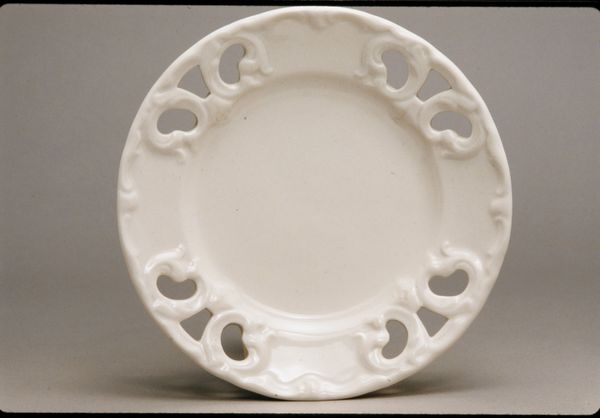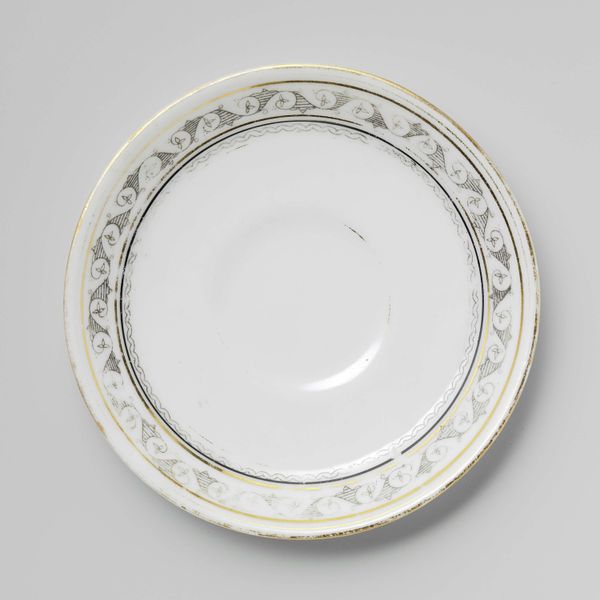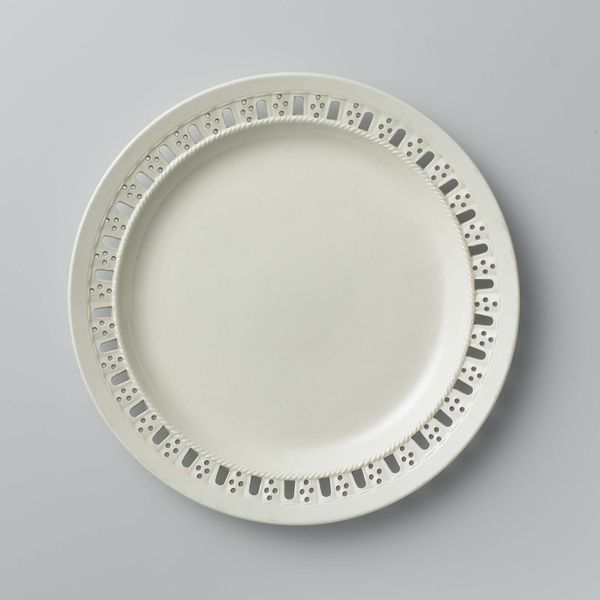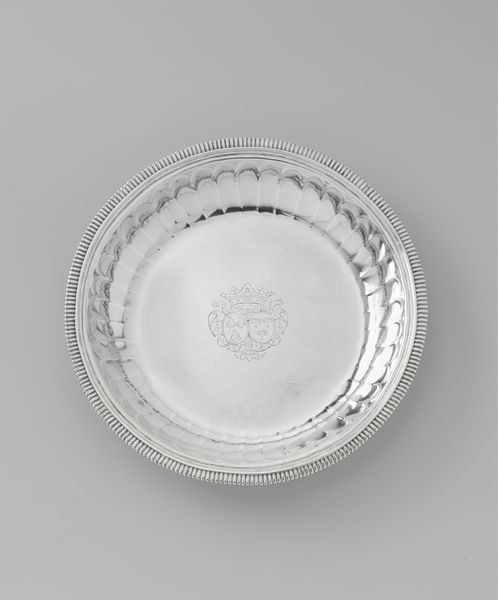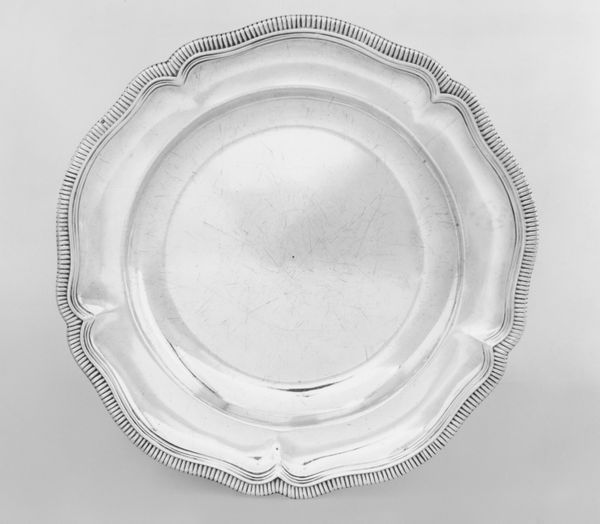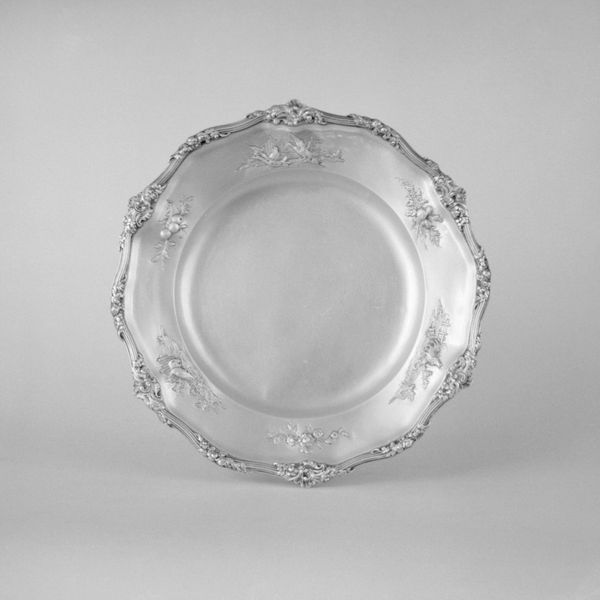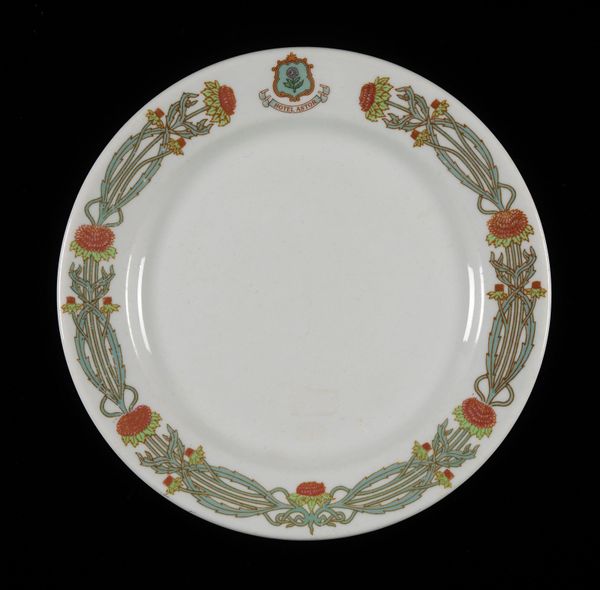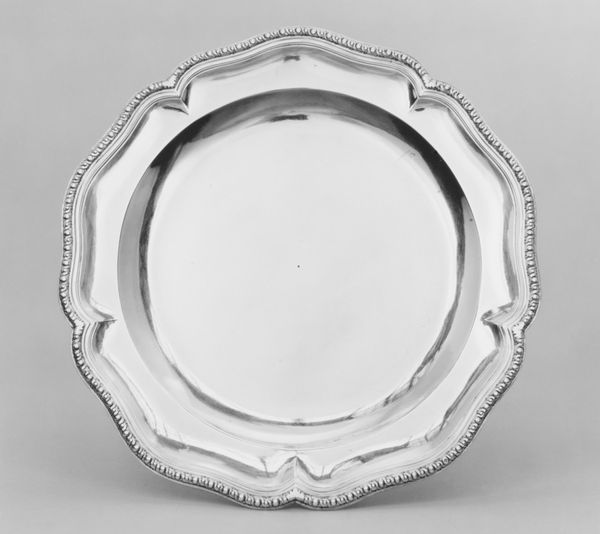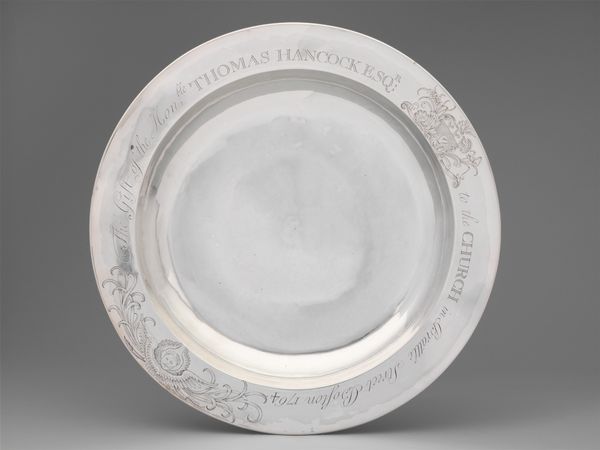
ceramic, porcelain
#
art-nouveau
#
decorative element
#
pottery
#
ceramic
#
porcelain
#
ceramic
#
decorative-art
Copyright: No Copyright - United States
Editor: So, here we have an Art Nouveau dinner plate from around 1900, created by Edward Colonna. It's porcelain. It's very delicate and muted... almost ethereal. I’m drawn to the swirling patterns. What stands out to you most when you look at this piece? Curator: Isn’t it wonderful? What speaks to me, truly, is its subtle rebellion. Art Nouveau was all about pushing back against the industrial, embracing nature, handcrafted beauty. And here, in something as everyday as a dinner plate, Colonna brings the artistry. It’s a quiet statement, wouldn’t you agree? Almost subversive in its gentleness. Editor: Subversive, how so? Curator: Well, imagine the formal dinners of the era! To place this dreamy, organic design amidst rigid etiquette and heavy ornamentation… it's like a whisper of freedom at a very proper table. It challenges expectation. Do you see the stylized waves, the almost imperceptible relief? It’s like holding a captured moment of fluidity, transforming utility into art. It suggests stories... doesn't it? Editor: I see what you mean. There's a sense of movement frozen in time, despite its being functional. I hadn't thought about it as subversive, but now I can see it. I learned a lot! Curator: Exactly! It reminds us to seek beauty and individuality, in the ordinary… and maybe even to stir things up, ever so gently. A pleasing dish, a delicious meal... a gentle challenge of convention.
Comments
minneapolisinstituteofart about 2 years ago
⋮
In Paris around 1900, a source for forward-thinking furnishings was Siegfried Bing's Parisian Gallery, La Maison Art Nouveau Bing. Colonna served as one of the shop's in-house designers. This plate's name and subtly incised decoration suggests Colonna drew inspiration from Chinese porcelain, which Westerners purchased for centuries at the port of Canton.
Join the conversation
Join millions of artists and users on Artera today and experience the ultimate creative platform.
